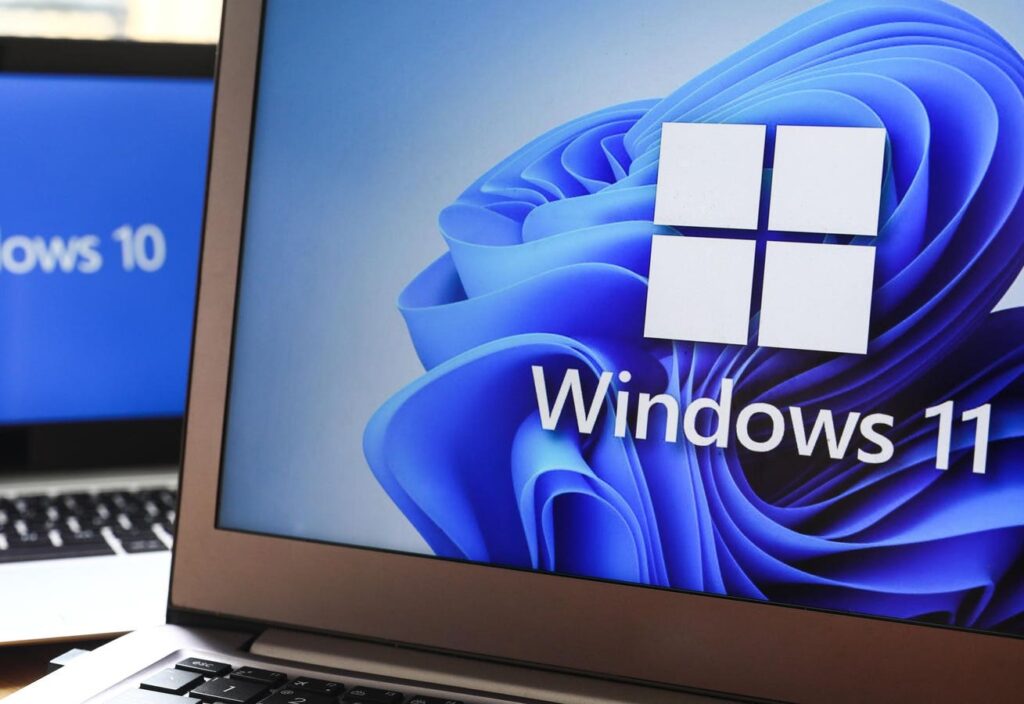Microsoft’s new warnings come as hundreds of millions risk losing support
NurPhoto via Getty Images
Updated on June 5 to include the reopening of the Windows 10 beta channel.
Turns out convincing us that taking constant screenshots of everything we do on a PC might not be Microsoft’s biggest challenge over the next year. Although it should. Spoiler alert—Memory is a terrible idea, an absolute privacy disaster in the making, and one that should be avoided at all costs.
But the bigger challenge than convincing users otherwise seems to be convincing them to upgrade from Windows 10 to Windows 11. Users know what they like, and a whopping 70% of Windows users haven’t made the switch. The OS that was first seen almost a decade ago has reached the end of its run.
like XDA Developers says, “Microsoft has a major Windows 10 migration problem on its hands. Right now, most Windows users are using Windows 10… The reason Windows 10 users aren’t upgrading is that they already know what Windows 11 is capable of and they’ve made the decision not to use it. As such, showing the upgrade process or going through a comparison list will not solve the problem.”
If you’re one of those kept, you can expect to be annoyed with constant warnings every now and then. As distinguished from Latest Windows“Microsoft is now rolling out two full-screen pop-up banners reminding everyone, including those with supported and unsupported PCs, to upgrade to Windows 11.”
There are two camps that this campaign is designed to reach. The first, with PCs capable of making the switch, and the second with those that are not. Latest Windows noted that “the banner on an unsupported computer warns that the computer will not receive updates and is not eligible for upgrades,” while “if you have a supported computer, you will be prompted to upgrade to Windows 11 by scheduling the update .”
Microsoft’s warning is clear. It’s time to upgrade your computer before support ends. The end of support for Windows is October 14, 2025. This means that your desktop will not receive technical support or security updates after that date.”
Microsoft support warning for Windows 10 users
Latest Windows
This is a complicated situation. While there will be the usual inertia and groups of users waiting for the switch as they prefer the older platform, there will be many, many others who don’t have the hardware to make the switch. And that’s a problem for Microsoft, those users, and all the systems and platforms they access.
And while that’s a boon for PC makers, the prospect of so many PCs rolling off the rails at the same time has other problems. like Categorys has said, “the end of support for Windows 10 could turn 240 million PCs into e-waste… Microsoft’s Windows 11 will help support a struggling PC market as customers prepare for another refresh cycle – but the end of support for Windows 10 could prevent hundreds of millions of devices from getting second lives, leaving many at risk to end up in landfills.”
A look at the headlines over the past 24 hours might suggest that there may be a softening of Microsoft’s stance on Windows 10, with news that it’s reopening a beta developer channel for Windows 10, which opens the window – so to speak – for features new “to bring new features and more improvements to Windows 10 as needed.”
“The bell is tolling for Windows 10,” PCWorld reported. “But with hundreds of millions of users still on the old version (and many refusing to upgrade), it looks like Microsoft has some improvements left to make. A new beta version just went live for Windows Insiders.”
Unfortunately for users whose hope may have been dashed, Microsoft has confirmed that the “end of support date for Windows 10 of October 14, 2025, is unchanged. Joining the Beta Channel on your Windows 10 PC does not change this.”
That this channel is being opened reflects the stubborn popularity of the old operating system, however, and is a possible precursor to last-minute confusion and panic a year from now, when that end-of-life date rushes to hundreds of millions of users.
This is for insiders only, and Microsoft also warns that “features and experiences included in the versions of Windows 10 we fly in the Beta channel may never be released as we try different concepts and get feedback. Features may change over time of time, be removed or replaced, and never be released beyond Windows Insiders.” But more encouragingly, perhaps simply “some of these features and experiences may appear in Windows 10 updates for everyone when they’re ready.”
There’s a further warning for those who want to play in this new sandbox—don’t let it mess up your upgrade path to Windows 10. Microsoft warns “we won’t automatically upgrade you to Windows 11 when you join the Beta channel. The Windows 11 upgrade will be available as an option, where you can choose to upgrade when you’re ready.” That said, if you switch to the Canary or Dev channels, then your PC WILL update and you’ll only get “a small window to go back to Windows 10”.
The only way out for Windows 10 users from the 2025 update deadline – and it’s about time – will be to buy Microsoft’s enhanced security updates, but it won’t be cheap. As reported by threshold, “for businesses, the first year costs $61. It then doubles to $122 for the second year and then doubles again in the third year to $244. If you enter the ESU program in the second year, you will also have to pay for the first year as the ESUs are cumulative.” Consumer prices will vary.
Whether paying the ESU fee or switching, you really need to maintain security updates for your system – as painful as either option can be.


